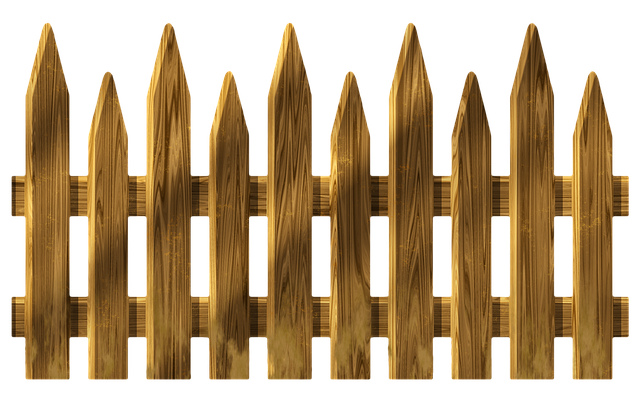In the heart of New Bedford, Massachusetts, a green revolution is taking root, literally. This city is embracing eco-friendly fencing materials, transforming both residential and commercial landscapes. This article delves into the sustainable alternatives available, exploring their benefits, types, installation practices, and cost-effectiveness compared to traditional fences. We also highlight local initiatives pushing for greener spaces, making New Bedford a model for environmental stewardship in the region.
- Understanding Eco-Friendly Fencing Options in New Bedford
- Benefits of Using Sustainable Fencing Materials
- Types of Eco-Conscious Fence Materials Available
- Installation and Longevity: An Eco-Friendly Perspective
- Cost Comparison: Traditional vs. Green Fences
- Local Initiatives Promoting Eco-Friendly Fencing in MA
Understanding Eco-Friendly Fencing Options in New Bedford
In New Bedford, MA, understanding eco-friendly fencing options is a step towards creating sustainable landscapes. These materials offer an alternative to traditional fencing, minimizing environmental impact and contributing to a greener community. Options range from recycled plastic and wood composite to natural materials like bamboo and hemp. Each has unique benefits, such as durability, low maintenance, and reduced carbon footprint.
New Bedford residents can choose from these options based on their aesthetic preferences, budget, and specific needs. Local availability and installation services further simplify the process, making eco-friendly fencing a viable choice for enhancing outdoor spaces while promoting environmental stewardship.
Benefits of Using Sustainable Fencing Materials
Using eco-friendly fencing materials offers numerous advantages for both homeowners and the local environment in New Bedford, MA. One of the key benefits is their sustainability, as these materials are typically made from renewable resources or recycled products, reducing the carbon footprint associated with traditional fencing options. This is especially relevant in an era where environmental conservation is a pressing concern.
Additionally, sustainable fencing can contribute to biodiversity and local ecosystem health. Many organic materials, like bamboo or recycled plastic, do not require harsh chemicals for treatment, minimizing pollution and preserving natural habitats. Furthermore, these materials often have longer lifespans, requiring less frequent replacement, which reduces waste and saves costs in the long run.
Types of Eco-Conscious Fence Materials Available
In New Bedford, MA, homeowners and businesses have a growing array of eco-conscious fence materials to choose from. These options range from natural, renewable resources like bamboo and recycled plastic to organic composites made from wood chips and biodegradable polymers. Bamboo fences offer both aesthetic appeal and remarkable strength, making them an excellent choice for those seeking a modern, sleek look. Recycled plastic, often combined with other materials, provides durability and resistance to rot, ideal for areas prone to harsh weather conditions.
Organic composites are another popular choice due to their low maintenance and long-lasting properties. These materials mimic the appearance of traditional wood fences but without the environmental impact associated with manufacturing and disposal. Their composition allows them to break down naturally over time, contributing to a more sustainable landscape. Each type offers unique benefits, catering to different preferences and needs while promoting environmental stewardship.
Installation and Longevity: An Eco-Friendly Perspective
Eco-friendly fencing materials offer a unique advantage when it comes to installation and longevity. These materials are designed with minimal environmental impact in mind, using sustainable resources and production methods. For instance, recycled plastic or wood composite fences require less energy and fewer natural resources compared to traditional wooden or metal fences.
Their durability is another significant benefit. Many eco-friendly options are treated to resist rot, decay, and insect damage, ensuring they last for years with minimal maintenance. This longevity translates to reduced waste and lower replacement costs over time, making them a financially sensible choice as well.
Cost Comparison: Traditional vs. Green Fences
When considering fencing options, homeowners often weigh the environmental impact alongside cost. In New Bedford, MA, opting for eco-friendly materials can be a financially prudent choice too. While traditional fences may offer immediate affordability, their long-term costs can include maintenance, replacement, and potential environmental fines due to material disposal. Green fencing alternatives, on the other hand, present initial investment benefits. These materials are often durable, requiring less frequent replacement, and their eco-conscious nature can lead to tax incentives or rebates from local initiatives promoting sustainable living.
Moreover, the reduced maintenance needs of many green fence options translate into lower ongoing expenses over time. For instance, natural, organic barriers like hedges or certain types of recycled plastic fencing need minimal upkeep compared to conventional fences that may require regular painting, sealing, or extensive repairs. This cost comparison highlights how environmentally responsible choices can offer a balanced approach to savings and sustainability in New Bedford’s residential landscape.
Local Initiatives Promoting Eco-Friendly Fencing in MA
In recent years, there has been a growing momentum for eco-friendly initiatives in New Bedford, Massachusetts. This trend extends to fencing materials, with local residents and businesses embracing sustainable options. The city has seen an increase in the use of recycled plastic and wood fence installations, reducing the environmental impact often associated with traditional fencing. These materials not only provide aesthetic appeal but also offer long-lasting durability, making them a practical choice for homeowners and commercial properties alike.
Local government bodies and community organizations have played a pivotal role in promoting these eco-friendly practices. Educational campaigns and incentives have encouraged residents to consider the environmental benefits of sustainable fencing choices. As a result, New Bedford is transforming into a model city for green infrastructure, where eco-conscious decisions are not just individual preferences but part of a collective movement towards a healthier, more sustainable future.
